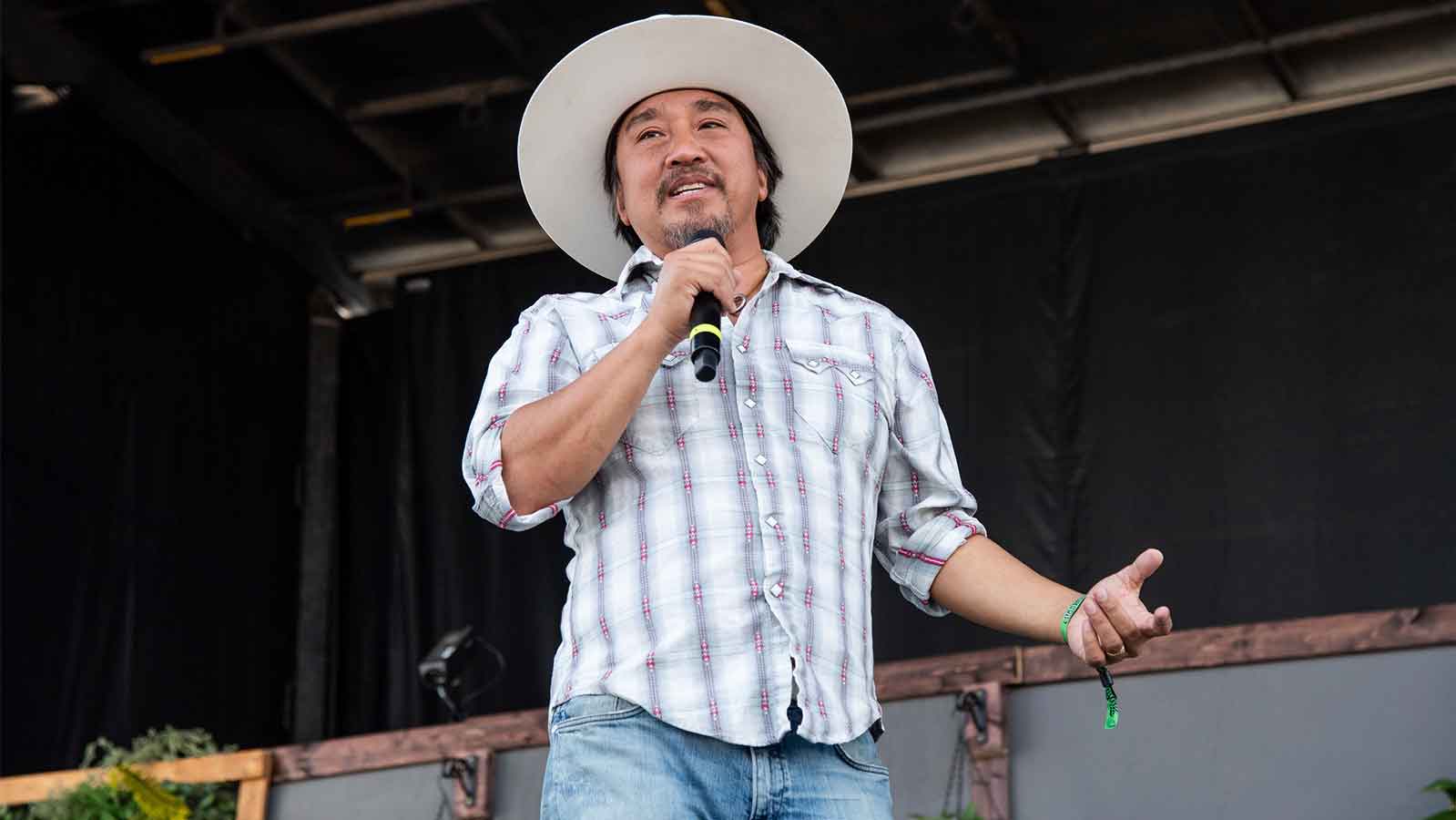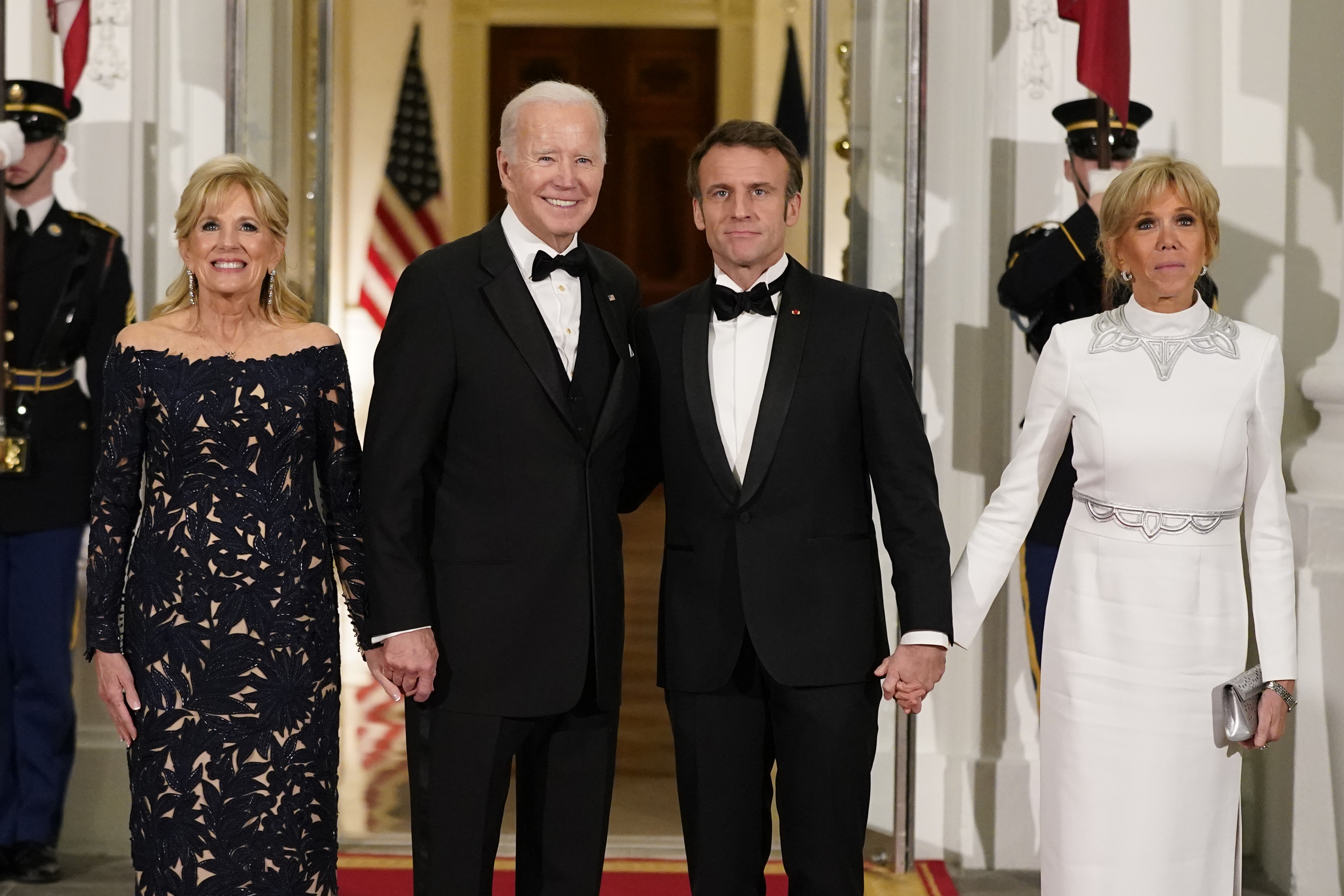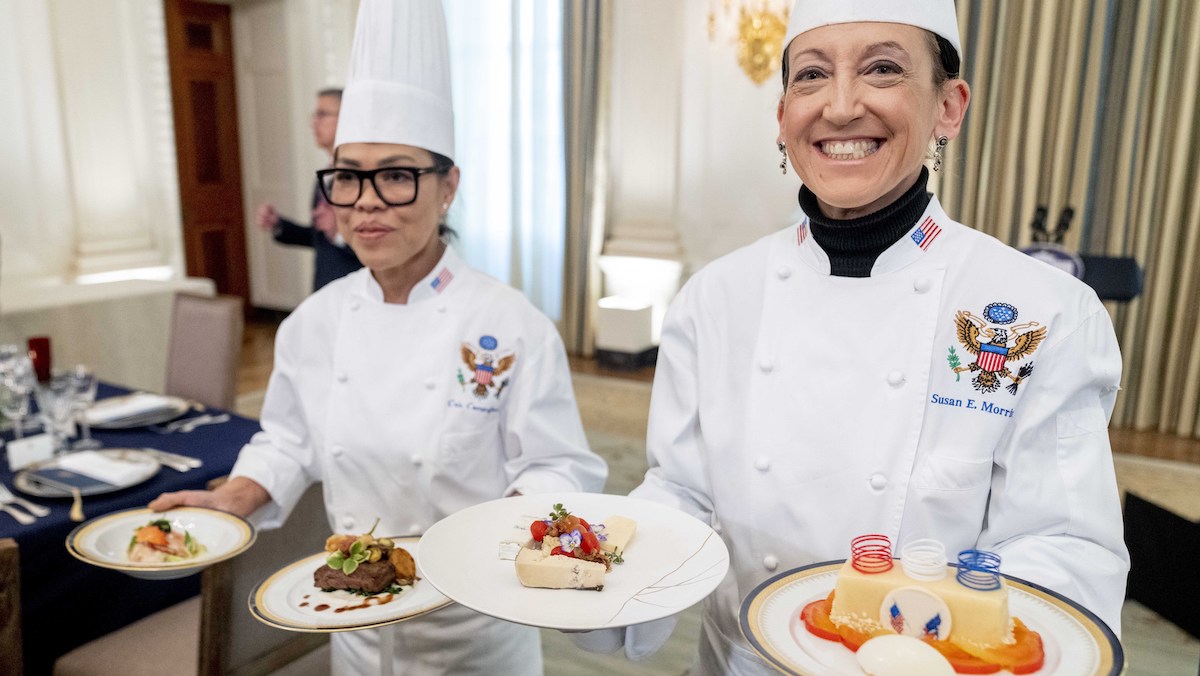It's been 70 years since the U.S. and the Republic of Korea signed the U.S.-ROK Alliance, and to celebrate, the White House is hosting South Korean President Yoon Suk Yeol and first lady Kim Keon Hee during a visit to the United States this week.
The celebration includes an official state dinner, with food from celebrity chef Edward Lee and performances from at least three Broadway stars, according to the Associated Press.
But what actually happens at a state dinner, and what's the reason for all of the pomp and circumstance surrounding them?
What Is a State Dinner?
Nowadays, the term "state dinner" is used exclusively to refer to dinners hosted by the White House in honor of foreign heads of state when they visit the U.S. -- and they're huge diplomatic events.
But state dinners are a tradition going back to the early 1800s, when the term used to refer to any large dinner honoring federal government officials or foreign dignitaries, according to the White House Historical Association.
By the late 1800s, it referred to an annual winter event held to honor Congress, the Supreme Court and diplomats. In 1874, King Kalakaua of Hawaii became the first ruling monarch to attend one such dinner, according to the WHHA.
State dinners remain a big deal to this day.
Washington Post Style reporter and columnist Roxanne Roberts has seen her fair share of state dinners.
"A state dinner is a way for a nation to acknowledge an ally," Roberts told News4. "It's a way of making a very formal proclamation of friendship."
It can be in honor of an international ally that the U.S. has had for many years, like the Republic of Korea, or it can be to reward an emerging democracy, Roberts said. But in both cases, it's a way of honoring a friend.
"The emphasis should be not on the dinner party, but the symbolism of ... the United States is saying to all of Korea, 'We want to honor you,'" Roberts said. "'We want to show you that we think that you're important. We want to showcase and give you the best that we have to offer.' Which is why the traditional hospitality is always a meal."
State dinners are typically carried out in black-tie formal attire, with official speeches and toasts, elaborate food, and notable celebrity guests.
"A state dinner honoring a visiting head of government or reigning monarch is one of the grandest and most glamorous of White House affairs," according to the WHHA's website.
It also serves as a more festive setting than, say, Congress or an embassy, for conversations about "the important business of government," the WHHA says.
"Information is gathered, opinions are exchanged, powerful connections are made, and appearances are upheld," the WHHA says. "For these reasons, White House invitations are the most important and the most sought after in the nation's social whirl."
What Happens at State Dinners?
To achieve the White House's overarching diplomatic goals, state dinners usually feature toasts, top-tier entertainment and food, and elaborate table settings and decorations.
"It's a way of highlighting American food and culture, because there's always entertainment afterward," Roberts said.
The evening also begins with music. The United States Marine Band is "a longtime fixture of state dinners and official White House events," according to the WHHA, and typically plays "Hail to the Chief" for the grand entrance of the president and first lady. The band also typically plays the anthem of the visiting nation or nations when their leaders enter.
After the president of the United States receives the guests, the group goes to the State Dining Room -- or whichever dining room is set up for the event. Depending on the number of guests and the time of year, the dinner may even take place outside on White House grounds, according to the WHHA.
Wednesday's state dinner with the South Korean president and first lady will take place in the East Room, and about 200 guests will be in attendance, according to White House social secretary Carlos Elizondo.
Roberts expects Wednesday's dinner to be very optimistic and forward-looking in tone.
"What I've been thinking about is the fact that President Biden announced that he is running for reelection," Roberts said, referring to the official Tuesday morning announcement. "I think that this is going to be very optimistic. It's spring, so it's going to be beautiful. And I think there's just this general sense of looking forward, of the future, of optimism -- that we have better days ahead."

Decorations
Like other state dinners before it, the place settings and decorations will be inspired by the visiting nation and the purpose of its leaders' visit, as seen by White House pool reporters during a media preview of the decor on Monday afternoon.
The decorations are often highly symbolic.
For Wednesday's event, many of the design elements were inspired by the Taeguk, the symbol in the middle of the ROK flag, "which represents balance, harmony and peace," according to Monday's briefing. The background design that will be featured in the dining room "is inspired by Dancheong, the Korean traditional coloring in architecture."
"When each president speaks, he will be framed by the vibrant colors and designs you may expect to see at an ancient Korean temple along with the historic architecture of this storied house, symbolizing our nation's powerful history together and our flourishing future," said Elizondo of Wednesday's setup.
The dinner with South Korea will feature round tables covered by platinum table cloths that honor the 70th anniversary of the ROK alliance, square tables made of teal blue plexiglass, and bamboo chairs with designs inspired by sumukhwa -- Korean ink brush paintings. Each table seats 10 people.
The place settings will use the President George W. Bush china, which includes a plate with a gold eagle in the center.
The centerpieces contain large cherry stems and blossoms, and smaller vases of flowers will contain peonies, orchids, more cherry blossoms, and azaleas in pink, red and white. Azaleas in particular are a native Korean flower, and the colors were chosen to complement the blue of the table.
The setting for Wednesday's dinner aims "to showcase the harmony of our cultures and our people intertwined," Jill Biden told reporters at the preview event.
Once they arrive in the dining room and the dinner begins, each nation's leader will offer a toast, according to the WHHA. The toasts often include "personal or historic stories, but also reflect how well the state visit and diplomatic talks have gone."
Then, guests finally get to eat.

Food
One of the most-anticipated parts of any state dinner is the menu. Like everything else, the menu is selected with diplomacy in mind, meaning the food is often influenced by the culture and cuisine of the visiting country.
"When Jacqueline Kennedy was first lady, they served French wines, because those were the best wines," Roberts said. "And then American vineyards were like, hey, wait a minute, what about us?"
"Since then, pretty much, it's all been the very best that America has to offer," Roberts said. "In this case, they brought in a Korean American chef so that the menu will reflect both cultures and the friendship of both countries."
Edward Lee, the chef for Wednesday's event and culinary director for D.C. restaurant Succotash, is Korean American and on Monday told reporters that he grew up fusing American and Korean food.
"I've always loved and promoted the intersection of American cuisine with Korean flavors," Lee said. "As a kid, Thanksgiving dinners were my family's favorite meals. And it was very traditional with turkey and sides and stuffing. But being Korean, we always had to put soy sauce and kimchi on everything. And I've kept that spirit throughout my whole culinary career."
The former "Top Chef" contestant was selected by Elizondo roughly two months before the event.
Lee told reporters that he came up with "a number of dishes," then "did a tasting with Dr. Jill Biden and her staff, and we tasted through, oh, I don't know, 10, 12, 13 different courses of food" before settling on the final menu.
"I wanted to showcase the best of American cuisine merged with a touch of Korean flavors," Lee said.
On Monday afternoon, the White House released that final menu. The mouth-watering options include fresh veggies for spring, Korean and southern U.S. flavors, and President Biden's favorite for dessert -- ice cream. Take a look:
First Course
- Maryland Crab Cake
- Cabbage, Kohlrabi, Fennel, and Cucumber Slaw
- Gochujang Vinaigrette
- Yellow Squash Soup
- Cured Strawberries, Perilla Leaf Oil
- Ferdinand Albariño “Vista Luna Vineyard” 2020
Main Course
- Braised Beef Short Ribs
- Butter Bean Grits, Sorghum-Glazed Carrots, Pine Nuts
- Januik Merlot “Red Mountain” 2020
Dessert
- Banana Split
- Lemon Bar Ice Cream, Fresh Berries, Mint Ginger Snap Cookie Crumble, Doenjang Caramel
- Schramsberg Blanc de Blancs 2019

Entertainment
Dinner is typically followed by "performances of some kind," according to the WHHA. On Wednesday, three Broadway stars will perform, to showcase "a quintessentially American art form" on "the world stage," the White House said.
Those performers include Norm Lewis, Jessica Vosk, and Lea Salonga.
Lewis appeared in "Miss Saigon," "Les Miserables," "Porgy and Bess" and "The Little Mermaid" on Broadway. He made history in 2014 as the first Black man to play the phantom in "Phantom of the Opera" on Broadway and has appeared in several well-known TV shows and movies.
Vosk appeared in the San Francisco Symphony's rendition of "West Side Story" as Anita, in the most recent Broadway revival of "Fiddler on the Roof," as Elphaba in "Wicked" on Broadway, and as the Narrator in the 50th anniversary production of "Joseph and the Amazing Technicolor Dreamcoat" at Lincoln Center in New York City.
Salonga appeared in "Miss Saigon" as Kim, winning a Tony, an Olivier Award, a Drama Desk award and an Outer Critics Circle Award. She has played both Eponine and Fantine in "Les Miserables" on Broadway and was the iconic singing voice for two Disney princesses: Mulan and Jasmine.
Their performances will take place with the help of director Michael Arden and musical director Ted Arthur.
Who's In Attendance at Wednesday's State Dinner for South Korea?
In the past, the White House has released a complete guest list for state dinners the day before or the morning of the event. As of this writing, no guest list has been released for Wednesday.
But there are a few known invitees. The headliners are the hosts, President Biden and the first lady, and the guests of honor, South Korean President Yoon Suk Yeol and first lady Kim Keon Hee.
Chef Lee, and the three performers and two directors, will also be in attendance.




